Covering Cakes with Fondant- A Cake Decorating Video Tutorial
In this cake video tutorial, I'll show you the basics of covering a cake with fondant.
Fondant is an edible sugar dough that is used all over the world to create beautiful cakes with a smooth finish.
Table of Contents
What Type of Fondant is Best?
There are many different opinions on the best brands or recipes of fondant.
Satin Ice and Wilton are good options and are not too expensive.
I use Liz Marek's recipe most often which is a combination of pre-made fondant and marshmallow fondant. You can find the link HERE. (I love it because it is more elastic, tastes like marshmallows, and I never have issues with elephant skin or tearing.
In this video, I cover my settled, buttercream crumb-coated cake with fondant rolled approx. ⅛" thick. I applied my buttercream slightly thicker than a usual crumb coat. Apply your frosting just thick enough to make the cake surface nice and smooth.
Using Ganache Beneath Fondant
You do not have to use buttercream beneath the fondant. In fact, many decorators prefer to use ganache frosting which is firmer and less likely to bulge.
Hop over if you'd like to see my Spreadable Ganache recipe in the Recipes section. It creates a really nice, sturdy foundation for fondant.
Steps for Covering Cakes with Fondant
Chilling the Cake
First, I like to place the frosted cake in the freezer for about 15-20 minutes just before covering with fondant. Chill until the frosting is nice and firm. If you skip this step, the frosting with shift as you apply the fondant.
Condensation
If you leave the cake in the freezer for too long (an hour or more), you will likely have condensation after applying the fondant.
You just want the outer layer of the cake to be chilled and firm when applying the fondant. However, if this happens to you, don't touch the fondant. Place the cake in front of a fan and the moisture will evaporate over time.
Rolling out the Fondant
While the cake is chilling, you can roll out your fondant. First, lightly grease the counter with a very thin layer of vegetable shortening. (Some decorators use a dusting of cornstarch or powdered sugar instead but I prefer shortening unless my fondant is very, very soft).
Roll the fondant to about ⅛ inch thickness (or less).
Covering the Cake
Remove the cake from the freezer.
Preparing the tier for fondant: I find that fondant adheres well to the chilled buttercream or ganache. If your crusted buttercream or your ganached cake seems too dry for fondant to adhere, mist it with a tiny bit of water or rub with a very thin layer of shortening.
Roll the fondant up onto a long rolling pin. (If it sticks to itself, you can dust it with a bit of powdered sugar.)
Unroll the fondant over the cake and then smooth the top and around the top edge of the cake first. This will keep the fondant from pulling down and tearing.
Then, work you way down around the sides. When the fondant wrinkles, just fluff/gently pull the fondant slightly away from the cake and go back in again, smoothing it around the sides.
Finally, trim away the excess with a pizza cutter or xacto knife.
More Fondant Cake Tutorials
We have other fondant tutorials that you may find helpful.
- Here is our tutorial on how to create and cover a cake with Marbled Fondant
Here is a tutorial on How to create and cover a ball/spherical shaped cake with fondant
In our Sledding Snowman Cake, you will see how I cover a spiral carved cake tier with fondant.
Here, we covered our Topsy Turvy Cake in fondant
And finally, How to Cover a Square Cake with Fondant
Enjoy the video!
We hope that you enjoy this quick video on covering cakes with fondant. You will notice that this is one of our older videos ;0)
We do plan to redo some of these oldies but until then-- the information and process has not changed over the years. I hope that you find it helpful!

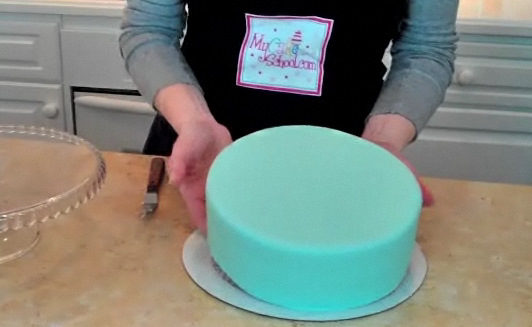
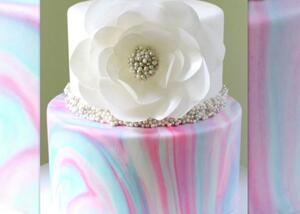
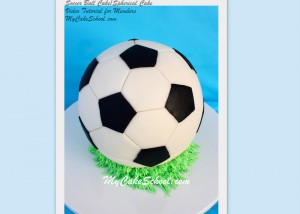
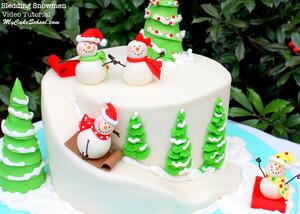
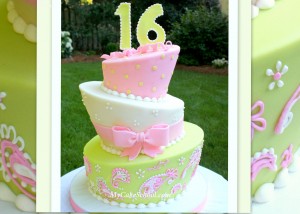
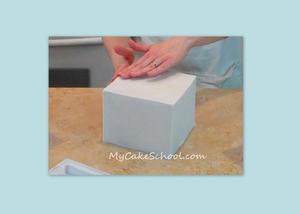
Hi Shirley- there could be a few causes and so it is hard to say. First, I prefer to use Liz Marek fondant, which is a combination of homemade marshmallow fondant and Wilton. You can find the recipe online- but I've never had issues with cracking or elephant skin, etc.
The air pockets could be caused by covering a cake that is very cold through and through. Some people swear by using a skewer to poke a hole all the way through the assembled cold tier before covering, saying that it prevents the air getting trapped.
However, for me, I just fill/assemble my tier, wrap with plastic wrap and allow to settle with something on top of it for a few hours (a book, cake pan, etc). If possible, I do this at room temperature. Then, I unwrap, frost the final coat, and freeze for about 15-20 minutes to firm up the outer layer of frosting.
(By the way, after baking my cake layers, I wrap and freeze them while they are still warm- I find it makes them even more moist. When it's time to thaw, I thaw at room temp still wrapped, until condensation begins to form and then I unwrap and continue thawing.)